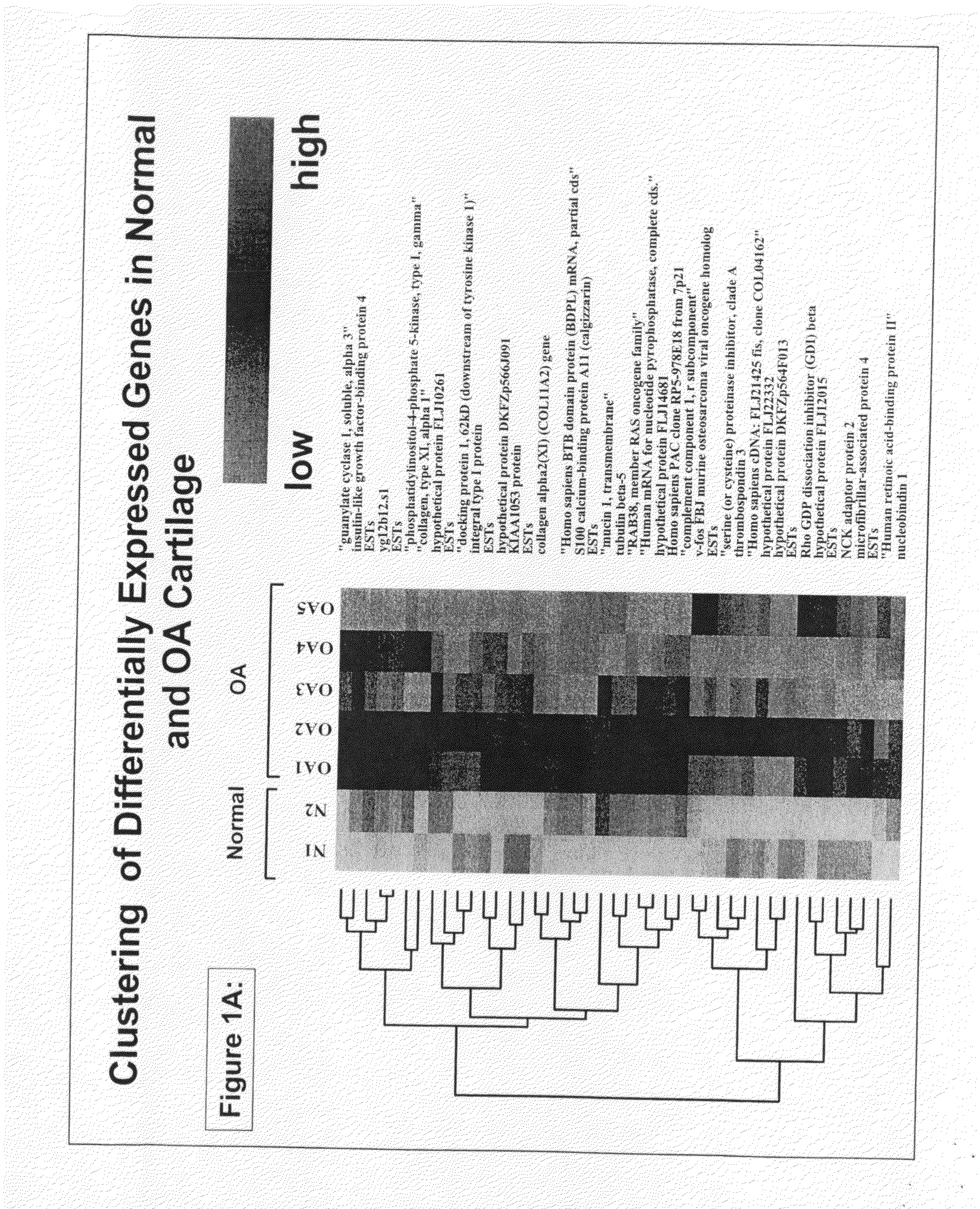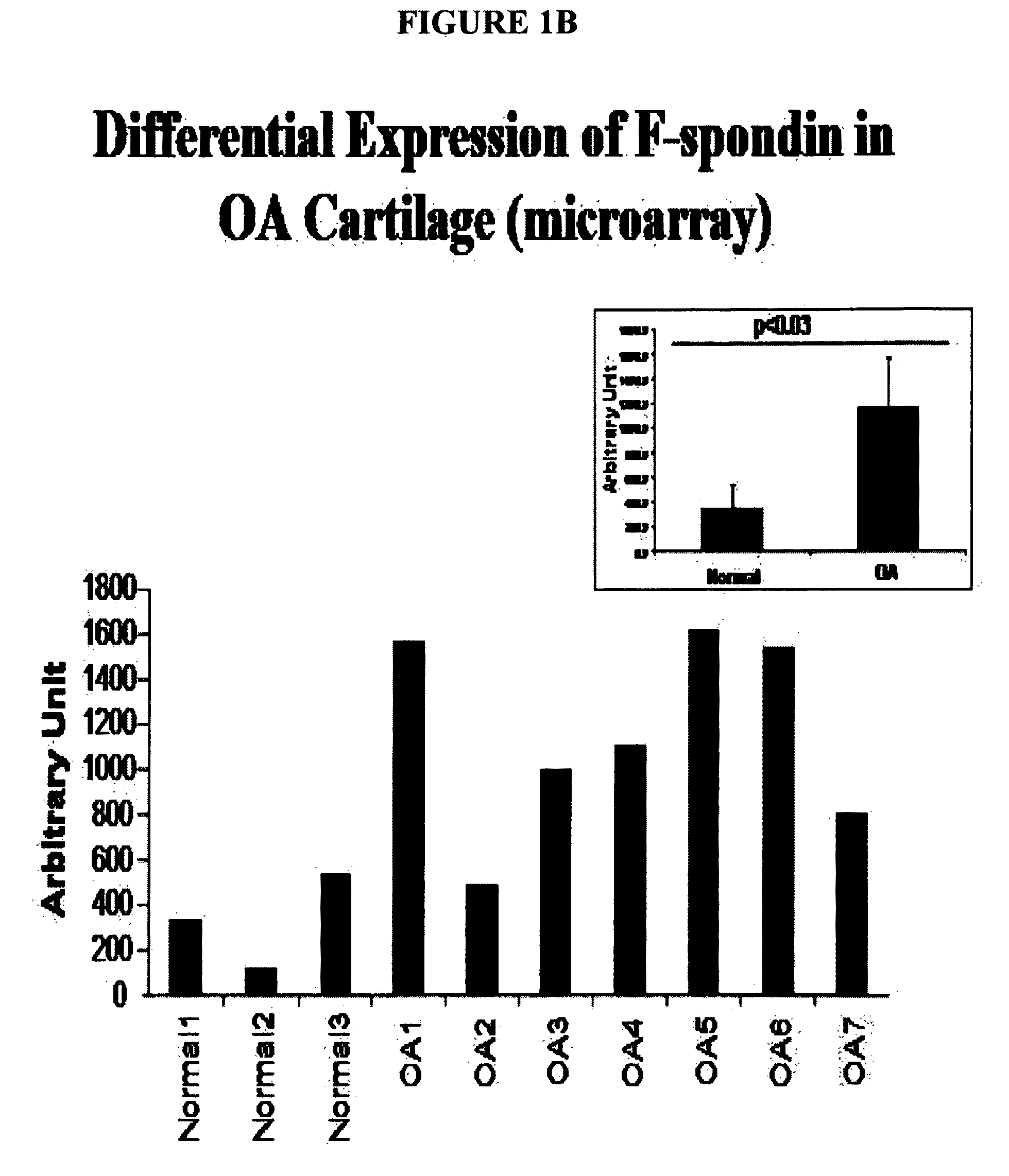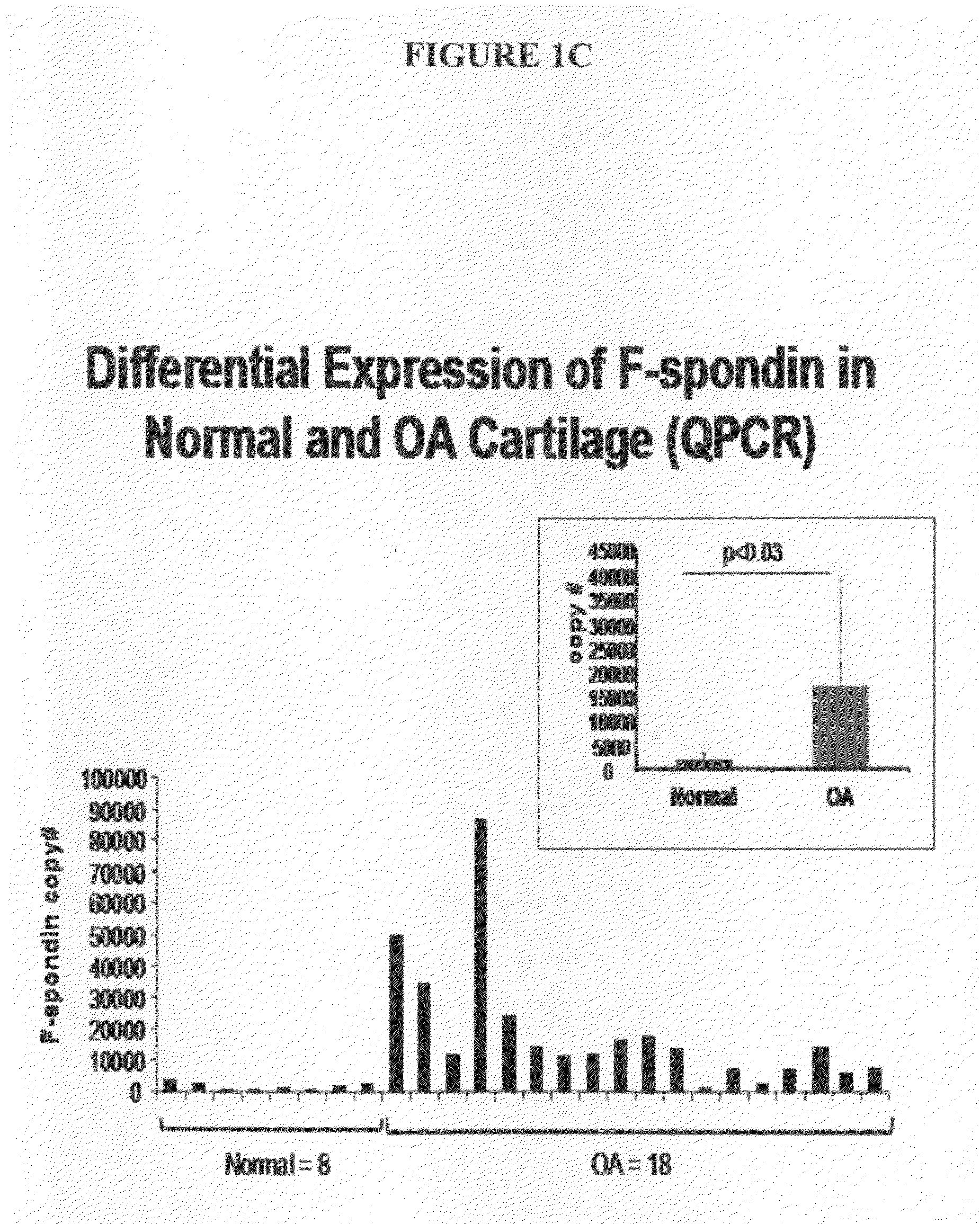Methods of using F-spondin as a biomarker for cartilage degenerative conditions and bone diseases
a biomarker and cartilage degeneration technology, applied in the field of identification and use of fspondin as a biomarker for cartilage degeneration and bone diseases, can solve the problems of limited knowledge of the underlying molecular mechanism, loss of joint function, bone damage, etc., and achieves the effect of reducing expression or activity/function, and increasing expression or activity/function
- Summary
- Abstract
- Description
- Claims
- Application Information
AI Technical Summary
Benefits of technology
Problems solved by technology
Method used
Image
Examples
example 1
Increased Expression of F-Spondin in Osteoarthritis
A. Global Gene Expression Studies in OA Cartilage in Human Subjects
[0338]Genomic studies designed to identify novel differentially expressed genes in osteoarthritis were performed. Total RNA was isolated from 20 non-arthritic and 50 osteoarthritic cartilages and pooled. Five OA pools and two normal pools, each comprised of ten individual patient RNA samples (1 ug each) were analyzed by microarray analysis according to an Affymetrix protocol. The data was further normalized and analyzed using a dchip program. Over 200 genes, including F-spondin, were determined to be significantly upregulated in OA versus normal as determined by hierarchical clustering (Attur M G, Dave M N, Tsunoyama K, Akamatsu M, Kobori M, Miki J, et al. “A system biology” approach to bioinformatics and functional genomics in complex human diseases: arthritis. Curr Issues Mol Biol 2002; 4(4):129-46), as shown in FIGS. 1a and b) and confirmed by quantitative polymer...
example 2
F-Spondin in Chondrogenesis
A. Distribution of F-Spondin in the Chick Embryo Growth Plate
[0342]Because of its known role in neuronal development, studies were performed to determine whether F-spondin was expressed in chick embryo growth plate chondrogenesis. Recently, it has been shown (FIG. 5a) that expression of eNOS and the generation of NO enhanced maturation of chondrocytes occurs by upregulating alkaline phosphatase and collagen type X expression (Teixeira C C, Ischiropoulos H, Leboy P S, Adams S L, Shapiro I M. Nitric oxide-nitric oxide synthase regulates key maturational events during chondrocyte terminal differentiation. Bone 2005; 37(1):3745). Eventually the chondrocytes in the center of this model undergo maturation, becoming hypertrophic and finally undergoing apoptosis. During hypertrophy cells express various hypertrophic markers such as increased plasma membrane alkaline phosphatase activity, elevated synthesis of type X collagen, down regulation of type II collagen pr...
example 3
F-Spondin and Chondrocyte Functions
[0345]Having demonstrated increased gene and protein expression of F-spondin in OA cartilage, studies were then done to characterize its function. Preliminary data suggest that F-spondin expression is regulated by IL-1β and anabolic growth factors similar to other ECM matrix proteins, type II collagen and aggrecan. In addition, as reported below, F-spondin exerts significant effects on chondrocyte function, most notable for capacity to inhibit IL-1β and TNFα expression as well as stimulation of anabolic growth factors such as TGF-β1, BMP-2 and ECM proteins, type II collagen and aggrecan.
A. Regulation of F-Spondin Expression: Effect of IL-1β
[0346]Since IL-1β appears to play a significant role in the pathogenesis of OA, its effects on F-spondin expression by QPCR in cartilage explants cultures was studied. Briefly, knee articular cartilage from patients undergoing knee replacement surgery was obtained and cut in 3-mm discs, and four to six discs (˜10...
PUM
| Property | Measurement | Unit |
|---|---|---|
| real time PCR | aaaaa | aaaaa |
| northern blot analysis | aaaaa | aaaaa |
| electrophoretic gel analysis | aaaaa | aaaaa |
Abstract
Description
Claims
Application Information
 Login to View More
Login to View More - R&D
- Intellectual Property
- Life Sciences
- Materials
- Tech Scout
- Unparalleled Data Quality
- Higher Quality Content
- 60% Fewer Hallucinations
Browse by: Latest US Patents, China's latest patents, Technical Efficacy Thesaurus, Application Domain, Technology Topic, Popular Technical Reports.
© 2025 PatSnap. All rights reserved.Legal|Privacy policy|Modern Slavery Act Transparency Statement|Sitemap|About US| Contact US: help@patsnap.com



